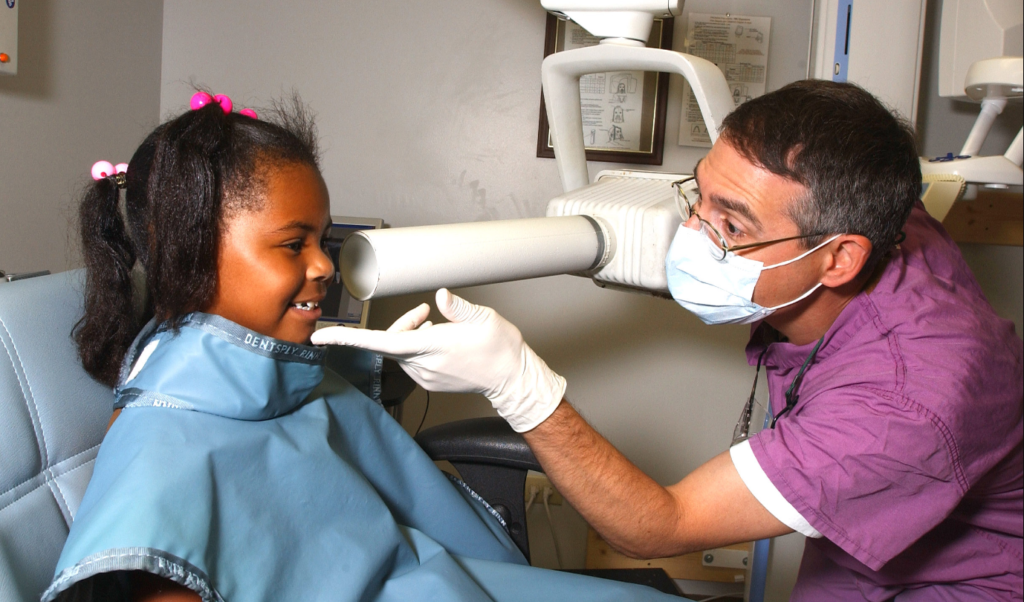
Oral Care
Caregivers/teachers should promote the habit of regular tooth brushing.
All children with teeth should brush or have their teeth brushed with a soft toothbrush.
Children under three years of age should have only a small smear (grain of rice) of fluoride toothpaste on the brush when brushing.
Children ages three and older should use a pea-sized amount of fluoride toothpaste.
An ideal time to brush is after eating.
The caregiver/teacher should teach the child the correct method of tooth brushing, the younger the child, the more they need to be involved.
Children whose teeth are properly brushed with fluoride toothpaste at home twice a day and are at low risk for dental caries.
No sharing or borrowing of toothbrushes should be allowed.
When children require assistance with brushing, caregivers/teachers should wash their hands thoroughly between brushings for each child.
Caregivers/teachers should wear gloves when assisting children with brushing their teeth.
Toothpaste should be stored out of children’s reach.

Regular tooth brushing with fluoride toothpaste is encouraged to reinforce oral health habits and prevent gingivitis and tooth decay.
Good oral hygiene is as important for a six-month-old child with one tooth as it is for a six-year-old with many teeth.
Tooth brushing with fluoride toothpaste at least once a day reduces build-up of decay-causing plaque.
The development of tooth decay-producing plaque begins when an infant’s first tooth appears in his/her mouth.
Children do not have the necessary hand eye coordination for independent brushing until around age seven or eight.
Brushing teeth with fluoride toothpaste is the most efficient way to apply fluoride to the teeth.
Young children may occasionally swallow a small amount of toothpaste and this is not a health risk.
